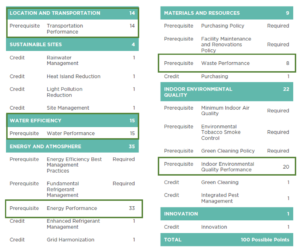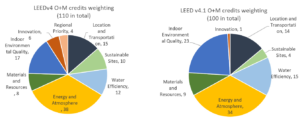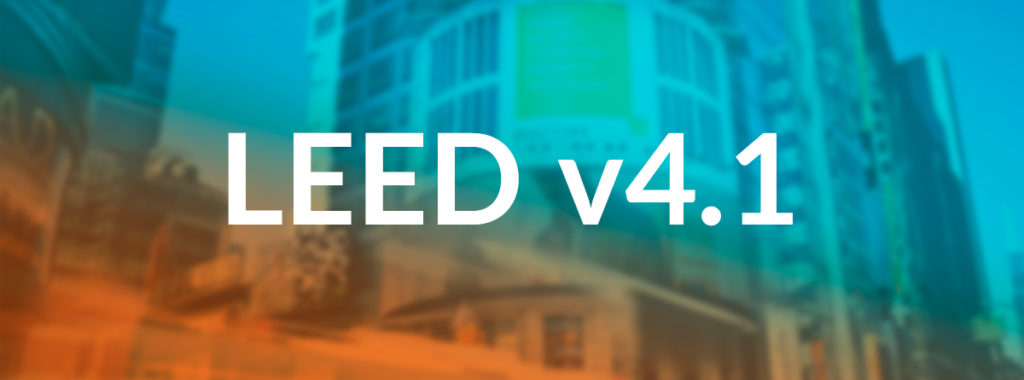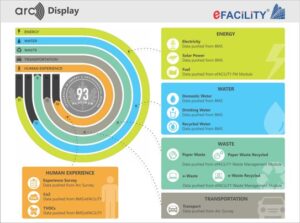A growing number of owners and operators are certifying their buildings under Operational Certification to assess their performance, identify inefficiencies, and provide a roadmap for improvement.
LEED v4.1, the incremental update to LEED v4, announced by USGBC earlier this year would be a perfect fit for this kind of certification or building assessment. What’s in it for your existing projects? In short: performance-based certification.

LEED v4.1 O+M Scorecard with highlighted performance-based credits
Indeed, some LEED points will be calculated from the building’s actual performance score, for each of these 5 categories of credits:
- Transport performance: a survey must be conducted at least once per year to understand the users’ transportation means. The CO2 emissions reduction from a baseline would be computed into the performance score;
- Water performance: at least 12 months of consumption should be recorded; this consumption would be compared to high-performing buildings and be translated into the performance score;
- Energy performance: at least 12 months of energy usage should be recorded. The GHG emissions and the source energy score will be worth each 50% of the final Energy performance score;
- Waste performance: at least 12 months of data on waste performance or a waste audit at least once a year, the waste performance score rates the resource consumption and resource use efficiency of the building (waste generated and diverted) against the consumption and efficiency of comparable high-performing buildings.
- Human Experience (Indoor Environmental Quality Performance): Building owners must perform an occupant comfort survey and/or air testing for CO2 and TVOC at least once a year. The occupant survey is worth 50% of the points, CO2 is worth 25%, and TVOC is worth 25%.
A minimum performance score of 40 should be reached for each of these 5 categories, up to 100, which will then be converted into LEED points.

Points difference for LEED v4 O+M and LEED v4.1 O+M
Thanks to this new scoring method, 10 points have been deleted and incorporated into the performance-based credits, thus reducing the maximum score from 110 to 100 points.
Existing projects under LEED v4.1 would need to record performance data in ARC, a platform created by the GBCI, with 90 of the 100 points available in LEED v4.1 O+M certification accounted in the platform.
ARC Platform interface
How about LEED v4.1 for BD+C or ID+C and others? This will be detailed in a future article.
If you would like to certify your asset through LEED v4.1 or if you have any other inquiries about Green Building certifications, please contact us at nieong@teraochina.cn.




![[Case Study]Boosting Productivity and Safety Through Optimized Factory Comfort](https://teraoasia.com/wp-content/uploads/2025/09/Cover-photo-150x150.png)
Leave A Comment